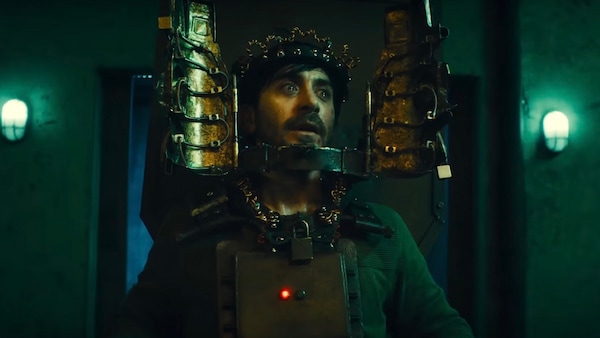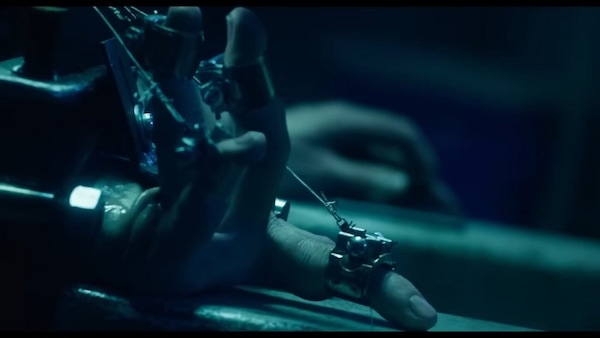Saw X: A Franchise's Spiritual Reboot Spurs Rebirth Of Morality-Gore
This is #CineFile, where our critic Rahul Desai goes beyond the obvious takes, to dissect movies and shows that are in the news.

Last Updated: 11.56 AM, Sep 29, 2023
THE fascinating part about “morality gore” — the mainstay of macabre movie franchises about not-so-good humans being punished in creative ways — is that it emerges from a past world. I grew up a fan of the Saw, Hostel and Final Destination movies, but I always enjoyed them as wicked satires. The torture porn worked because it was a fun manifestation of the social allergy towards annoying American adults, annoying American tourists and annoying American teenagers. It was cinema’s way of toying with real-life stereotypes. But this genre stems from a pre-social-media age, back when rage still had a shock value.
Rage is now mainstream; it’s outrage — and readily visible across timelines and screens. The cultural normalisation of hatred means that a movie like Saw X inherits a newer, darker context. Now the games and gore almost feel closer, an extension of our frustrations and (online) disillusionment with everyday life. As a result, the twisted philanthropy at the heart of this misanthropic horror franchise — where flawed victims are offered one final shot at enlightenment — acquires deeper meaning. It’s the sort of binary new-age compassion that comes with caveats: Do or die. Evolve or perish. Saviour or troll. The blood and guts of Saw X become a manifestation of modern discourse. The story cuts straight to the bone: A dying man is scammed, and his revenge is laced with uneasy kindness.

That the dying man is the infamous Jigsaw, John Kramer, repositions him as an angry protagonist rather than — as we’ve seen for years — a deranged antagonist. His actions and elaborate games don’t seem so random anymore. The gore is a little more…humanised. The morality he seeks almost makes him a vigilante of sorts. If anything, Kramer is an emblem of how love today can be assembled from the language of hatred; he genuinely thinks he rehabilitates villains by torturing them (well, at least the ones who survive). And this time, it’s personal. Saw X is the direct sequel to the original Saw (2004) — Kramer, who reveals himself as the ‘corpse’ at the end of the first film, has terminal brain cancer. He has a few months to live. When he comes across a miracle cure, it sounds perfectly plausible — the way most too-good-to-be-true schemes do when they prey on hope. He believes it because he wants to. He believes Dr Cecilia Pederson’s speech about how governments and big pharma players have joined forces to ban this cure and maintain the health economy. He believes that they’ve had to go into hiding.

Kramer travels to Mexico; Cecilia and her team treat him in their top-secret facility. He goes into remission. These opening 30 minutes of the film are most un-Saw-like; all we see is a frail old man paying a fortune to extend his life — and earning another chance. It’s a version of what he does to the people he ‘cures,’ until it’s not. His dream turns into a nightmare when, a few weeks later, he arrives to find that the whole thing was a hoax. He was fooled; his vulnerability was exploited. He’s still dying. They pretended to operate on him. For the first time in the franchise, John Kramer is exposed as painfully human — he fell for a scam as if it were a Nigerian email address promising a pot of money in exchange for a bank account number. So it begins. One by one, he hunts them down and, with the help of his protege Amanda (who took over in Saw II), places them in Jigsaw hell. She is still a greenhorn; you can tell by the way she winces when the youngest of the victims is put through the symphony of suffering. Their relationship is raw; you can tell by how desperate Kramer is to pass the baton.

The second hour is familiar. It features torn arms, amputated thighs and necks, live brain fragments, radiation and gas chambers. It’s right up there on the barf-o-meter, especially because the film slices through the flesh of its cash-grabbing predecessors and returns to the bare essentials. The equation is simple, nearly poignant: John Kramer gives these con-artists the ‘dignity’ of his craft — the chance to reform in the jaws of death — against his own instincts. In his head, they don’t deserve it, but he is being kind to them by devising those sinister games. Absurd as it may sound, actor Tobin Bell manages to recalibrate the psychopathic coldness into a form of tenderness. The twist isn’t a patch on the original, because the novelty isn’t the same after two long decades, but it’s also not blind fan-service. It’s conventional because Jigsaw himself is strangely conventional — like any other tormented mastermind, a step ahead of his tormentors. There is an emotional method to the gruesome madness. It’s not like the film sets out to rationalise its central character; it just seems to find him along the way. It’s probably the final piece of a jigsaw puzzle that has sickened gleeful audiences across generations.
This decision — to turn back time to a precise point between the first and second film — is a worthy one. John Kramer and Amanda may have aged, but what we see is a spiritual reboot of a franchise that reimagines the genre of torture-porn in an era of desensitisation, hyperexposure and physical excesses. It’s a grand and gory social experiment — one that succeeds both despite and because of its directness. The skin is simply a front for the soul. The sequence is the same, but the DNA is different: He came, he conquered, he saw (through). After all, ‘Saw X’ is perhaps the perfect title for a violent, Twitter-fuelled planet.

